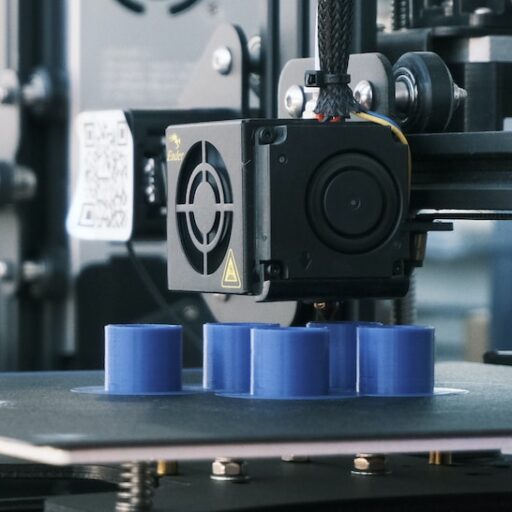Support our educational content for free when you purchase through links on our site. Learn more
How Long Will a PLA 3D Print Last? [2024] ��
Have you ever wondered how long your PLA 3D prints will last? Does PLA filament have an expiration date? These are common questions among 3D printing enthusiasts, and we’re here to provide you with all the answers! In this comprehensive guide, we’ll delve into the lifespan of PLA prints, the factors that affect filament life, and how to properly store your PLA filament. So, let’s dive in and discover the longevity of PLA 3D prints!
Table of Contents
- Quick Answer
- Quick Tips and Facts
- Background: What is PLA Made Of?
- Does PLA Filament Go Bad?
- Factors that Affect 3D Filament Life
- How Long Do PLA Prints Last?
- How Long Does PLA Last After Printing?
- How to Store PLA Filament
- Does Other 3D Filament Expire?
- How Long Does 3D Printer Filament Last?
- FAQ
- Conclusion
- Recommended Links
- Reference Links
Quick Answer
The lifespan of a PLA 3D print can vary depending on various factors such as storage conditions, exposure to the elements, and the quality of the filament used. However, under normal room temperature conditions, a PLA 3D print can last for several years, with some prints lasting over a decade! It’s important to note that PLA prints are not indestructible and can degrade over time, especially if exposed to moisture or harsh environmental conditions.
Quick Tips and Facts
Before we dive into the details, here are some quick tips and facts about the lifespan of PLA 3D prints:
✅ PLA prints can last for several years under normal room temperature conditions.
✅ Proper storage and handling can significantly extend the lifespan of PLA prints.
✅ PLA filament does not have an expiration date, but it can degrade over time.
✅ Factors such as moisture, mechanical stress, and filament quality can affect the lifespan of PLA prints.
✅ PLA prints can last over 15 years if stored properly.
✅ PLA prints exposed to water can degrade within 47 to 90 days.
✅ PLA prints exposed to outdoor elements can last anywhere from a few months to a year.
Now that we have a quick overview, let’s explore the topic in more detail.
Background: What is PLA Made Of?

PLA (Polylactic Acid) is a biodegradable thermoplastic polymer made from renewable resources such as cornstarch, tapioca roots, or sugarcane. It is one of the most popular materials used in 3D printing due to its ease of use, low odor, and environmental friendliness. PLA filament is widely available and comes in a variety of colors, making it a favorite choice for hobbyists and professionals alike.
Does PLA Filament Go Bad?
Unlike food or other perishable items, PLA filament does not have a specific expiration date. However, it can degrade over time, especially if exposed to moisture or extreme environmental conditions. Moisture absorption can lead to poor print quality, clogging of the printer nozzle, and reduced mechanical strength of the printed object. Therefore, it’s important to store PLA filament properly to maintain its quality and longevity.
Factors that Affect 3D Filament Life
Several factors can affect the lifespan of PLA filament and 3D prints. Here are the key factors to consider:
-
Moisture: PLA filament is hygroscopic, meaning it can absorb moisture from the surrounding environment. Moisture absorption can lead to filament degradation and poor print quality. Storing PLA filament in a dry environment is crucial to maintain its integrity.
-
Mechanical Stress: PLA prints can be susceptible to mechanical stress, especially if they are subjected to heavy loads or constant flexing. Over time, this stress can cause the printed object to weaken and eventually fail.
-
Filament Quality: The quality of the PLA filament itself can also impact its lifespan. Higher-quality filaments are often more resistant to moisture absorption and have better mechanical properties, resulting in longer-lasting prints.
By considering these factors and taking appropriate measures, you can ensure the longevity of your PLA prints.
How Long Do PLA Prints Last?
The lifespan of PLA prints can vary depending on the aforementioned factors. Under normal room temperature conditions and proper storage, PLA prints can last for several years. In fact, many PLA prints have been known to last over a decade! However, it’s important to note that the lifespan of a PLA print can be significantly reduced if it is exposed to moisture, extreme temperatures, or mechanical stress.
How Long Does PLA Last After Printing?
Once a PLA print is completed, its lifespan will depend on the conditions it is exposed to. If properly stored and protected from moisture and mechanical stress, a PLA print can last for many years. However, if the print is exposed to water or harsh outdoor elements, its lifespan can be significantly reduced. PLA prints exposed to water can degrade within 47 to 90 days, while prints exposed to outdoor elements may last anywhere from a few months to a year.
How to Store PLA Filament
Proper storage is key to maintaining the quality and longevity of PLA filament. Here are some tips for storing your PLA filament:
-
Sealed Container: Store your PLA filament in a sealed container to protect it from moisture in the air. Airtight containers or vacuum-sealed bags are ideal for this purpose.
-
Desiccants: Place desiccant packets or moisture-absorbing materials, such as silica gel, in the storage container to further prevent moisture absorption.
-
Away from Heat and Sunlight: Store your PLA filament in a cool, dry place away from direct sunlight and sources of heat. Heat can soften the filament and cause it to deform.
By following these storage guidelines, you can ensure that your PLA filament remains in optimal condition for longer periods.
Does Other 3D Filament Expire?
While PLA filament is known for its biodegradability and environmental friendliness, other 3D filaments such as ABS and PETG have different properties. ABS filament, for example, is more durable and less susceptible to moisture absorption compared to PLA. PETG filament offers similar durability and moisture resistance. Both ABS and PETG filaments can last longer than PLA if stored properly.
How Long Does 3D Printer Filament Last?
The lifespan of 3D printer filament, including PLA, will depend on various factors such as storage conditions, exposure to moisture, and the quality of the filament. Under optimal conditions, PLA filament can last for several years. However, it’s important to regularly inspect your filament for signs of degradation, such as brittleness or discoloration. If you notice any signs of degradation, it’s best to replace the filament to ensure the quality of your prints.
FAQ

How durable is 3D printed PLA?
PLA prints can be quite durable, especially when printed with high-quality filament and proper settings. However, PLA is not as strong as materials like ABS or nylon. PLA prints can withstand everyday use and light stress, but they may not be suitable for applications that require high strength or impact resistance.
Read more about “3D Printing Plastic Types: A Comprehensive Guide …”
How quickly does PLA degrade?
The degradation rate of PLA depends on various factors such as exposure to moisture, temperature, and mechanical stress. Under normal room temperature conditions, PLA prints can last for several years. However, if exposed to moisture or harsh environmental conditions, PLA can degrade more quickly.
Does 3D printing filament expire?
3D printing filament, including PLA, does not have a specific expiration date. However, it can degrade over time, especially if exposed to moisture or extreme conditions. Proper storage and handling can significantly extend the lifespan of filament.
How long can a 3D printer safely print?
The duration of a 3D printer’s continuous operation will depend on the printer model and its specifications. Most consumer-grade 3D printers can safely print for several hours to a day without any issues. However, it’s always a good idea to refer to the manufacturer’s guidelines for the specific printer model you are using.
Conclusion

In conclusion, PLA 3D prints can last for several years under normal room temperature conditions and proper storage. By storing your PLA filament in a sealed container with desiccants, away from moisture and extreme temperatures, you can extend the lifespan of your prints. While PLA prints are not indestructible and can degrade over time, they can still provide years of enjoyment and practical use. So go ahead and unleash your creativity with PLA 3D printing!
Remember, proper storage and handling are key to maintaining the quality and longevity of your PLA prints. By following the tips and guidelines provided in this article, you can ensure that your PLA prints stand the test of time.
Recommended Links
- CHECK PRICE on: PLA Filament | ABS Filament | PETG Filament
- Shop 3D Printers on: Amazon | Walmart | Etsy | eBay
Reference Links
- Monofilament Direct – How Long Does PLA Last? Does It Expire?
- 3D Printed – Statistics About 3D Printing: Trends, Facts, and Insights
Now that you have a comprehensive understanding of how long PLA 3D prints can last, it’s time to unleash your creativity and start printing amazing objects! Happy printing! ��️��




